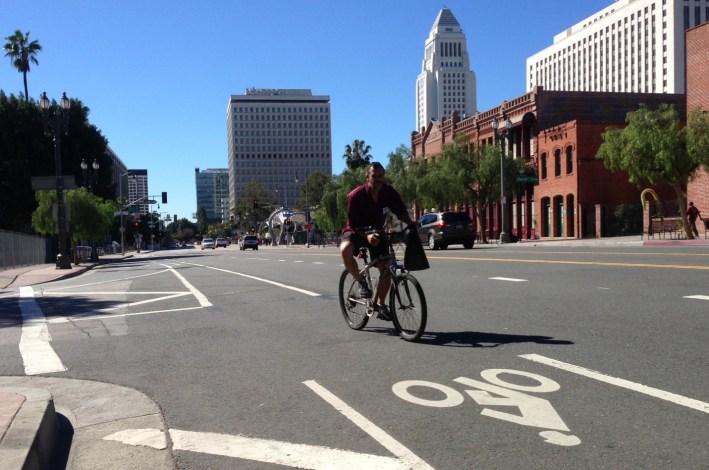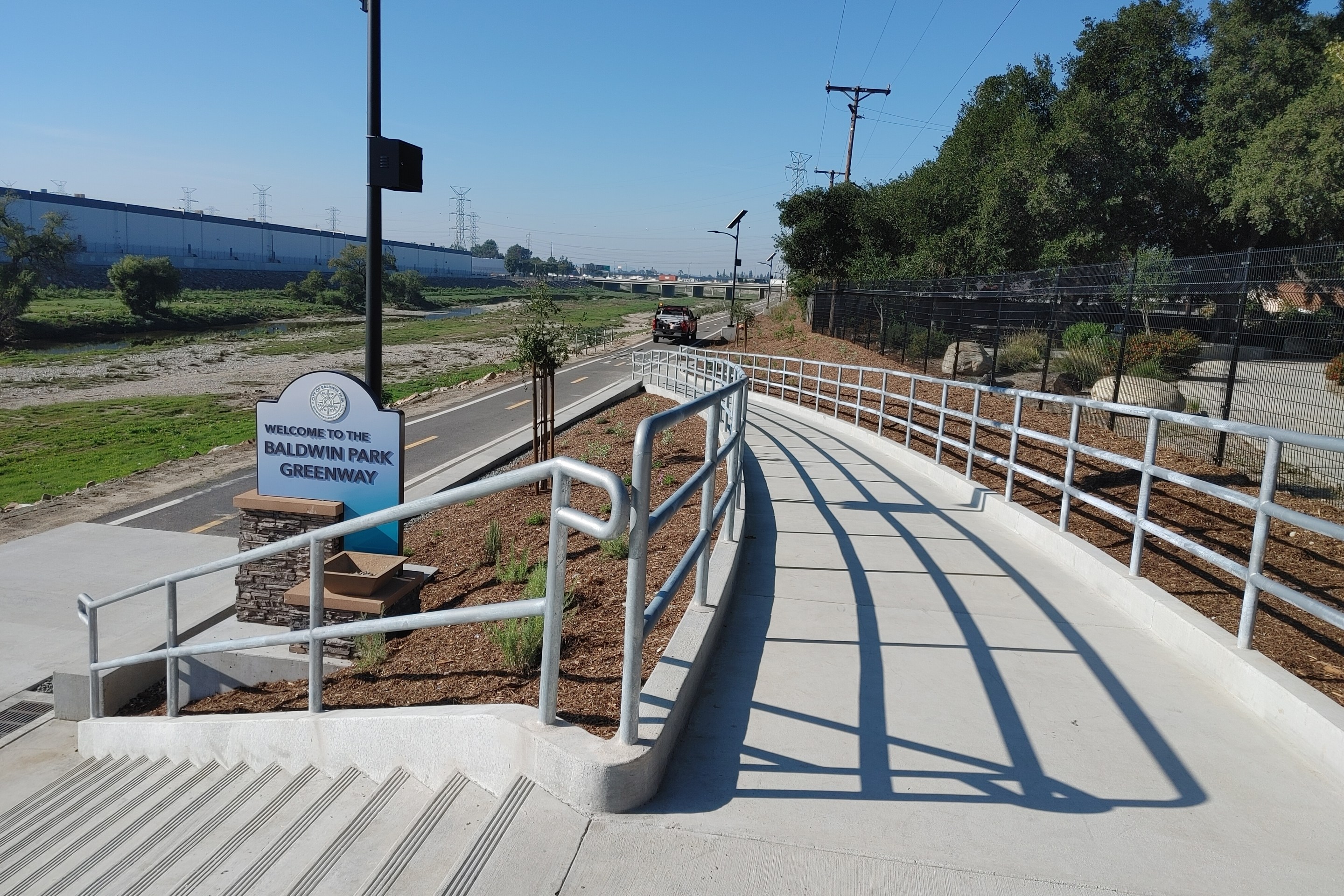
This morning, I listened to SBLA editor Damien Newton interviewed yesterday on KFI radio's John and Ken show . Frankly it made me tense to hear the level of antipathy that John and Ken express toward people who bike. Toward me. Toward my family and our safety.
I heard a few misconceptions stated by the hosts, who repeatedly accused Damien of lying.
The falsehood I want to focus on, the one that John and Ken repeated, over and over, was that there are existing places in Los Angeles where bikes get fifty percent of the roadway. I counted ten mentions of this assertion. The first and clearest was in the hosts' introduction (at 01:25) when they stated:
They've [bicyclists] gotten fifty percent of the roadway on some streets in downtown L.A. and other places.
Readers - is there actually a street anywhere in Los Angeles where fifty percent of the roadway is set aside for bikes?
John and Ken, if you are reading this, maybe you could explain where you got this fifty percent number. What streets are you talking about?
The hosts did go on to explain this a bit, blaming road diets. Road diets generally take one lane away from cars and replace it with two bike lanes. In recent years, the city of L.A. has implemented just over fifty miles of road diets on its 6,500 miles of roads. Some road diets perhaps worsen congestion, some do not, and occasionally, in some places where lots of cars turn, they reduce congestion. I am going to assert that 50+ miles of road diets are not a major cause of the extensive congestion many drivers experience throughout Los Angeles. None of these road diets have ever been done on freeways, which seem pretty congested pretty frequently.
But do any road diets in Los Angeles actually give fifty percent of the roadway to bikes?
I'm going to dive into the weeds of measuring lane widths here. Car lanes are mostly 10 to 12 feet wide. Bike lanes are mostly 5 to 6 feet wide. The most common road diet is a "4-to-3," converting four car lanes to three car lanes. One example of this in L.A. is 7th Street from Downtown to Koreatown. The "before" condition is two car lanes in each direction, with no turn lanes. The "after" condition is one car lane in each direction, with a continuous left turn lane and one bike lane in each direction.
If we don't count that center turn lane (or any street parking), after the road diet, the dieted street will have 2 car lanes - roughly 22 feet of width - and two bike lanes - roughly 10 feet. Bikes get 10 feet out of 32 feet; that's 31 percent or roughly a third of the roadway. I'll repeat: that one-third estimate is just the through-traffic area, not counting space allocated for cars turning or cars parking. If we include an 11-foot turn lane and two 7-foot parking lanes, the percentage for bikes goes down to about 20 percent (10 feet out of 57 feet), or roughly a fifth of the roadway.
A lot of L.A. road diets are even bigger. Some corridors, including Los Angeles Street and Colorado Boulevard, went from six car lanes to four car lanes with two bike lanes. Not counting turning or parking, this scenario gives bikes roughly a third to a fifth of the space, too.
I asked around among my Facebook friends if they could think of any streets where bikes were getting fifty percent. SBLA contributor Roger Rudick suggested the Second Street tunnel in downtown Los Angeles. The tunnel used to have four car lanes, and, in 2013, the city implemented a road diet there. Today it has two car lanes and two bike lanes. There's no parking. The bike lanes are extra-wide buffered bike lanes, which now have candlestick dividers, so a stretch of bike lanes in the tunnel are arguably protected bike lanes.
How about Second Street? Do bicyclists have fifty percent there?
The only way to know is to go and measure. I grabbed my measuring wheel and biked downtown this morning. Inside the tunnel, there are two 11-foot car lanes, two 6-foot bike lanes, and two 4-foot buffers. The roadway is 42 feet wide, with 22 feet of car lanes and 20 feet of bike lanes. Bikes get forty-eight percent of the space.
Close to fifty percent, but not quite.
And that is one tunnel in downtown L.A., not quite, as John and Ken asserted, "some streets in downtown L.A. and other places."
It is probably futile to try to get John and Ken to change their rhetoric on this, but, today, there are no streets anywhere in L.A. where bicyclists have fifty percent of the roadway. I wish there were.
For more rebuttals to this kind of rhetoric, see Damien's earlier "How to Win Holiday Arguments" piece here.






